|
I am a senior applied scientist at Amazon and work on virtual try-on of apparel, garment customization and fit perception. I received my PhD in computer science in 2021 from Carnegie Mellon University, advised by Jim McCann at the Textiles lab at CMU. My PhD thesis describes systems for enabling custom, on-demand, 3D fabrication with industrial knitting machines. I am broadly interested in fabrication (especially textiles), graphics and visualization. If you are a PhD student interested in an internship with Amazon science on ideas related to virtual try-on and fit, do reach out to me. Email | CV | Google Scholar |

|
|
|
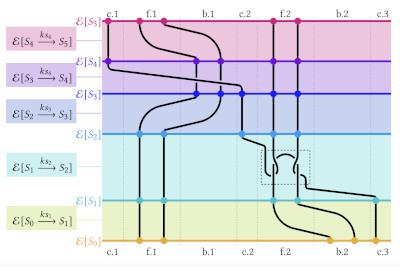
|
Semantics and Scheduling for Machine Knitting Compilers A lot of recent work in machine knitting (including past projects below) focus on constructing manifold surfaces using machine knitting by figuring out how to construct arbitrary geometric shapes. However, they don't describe all that a machine can do and do not reason about equivalence and correctness of machine-knitting programs. This work comes up with formal semantics for knitout (a DSL for machine knitting) by using fenced tangles which extends ideas from knot theory to work for knit structures. With these formal representations, we prove the correctness of rewrite rules which in turn can be used for optimizing and re-compiling knit programs correctly. |
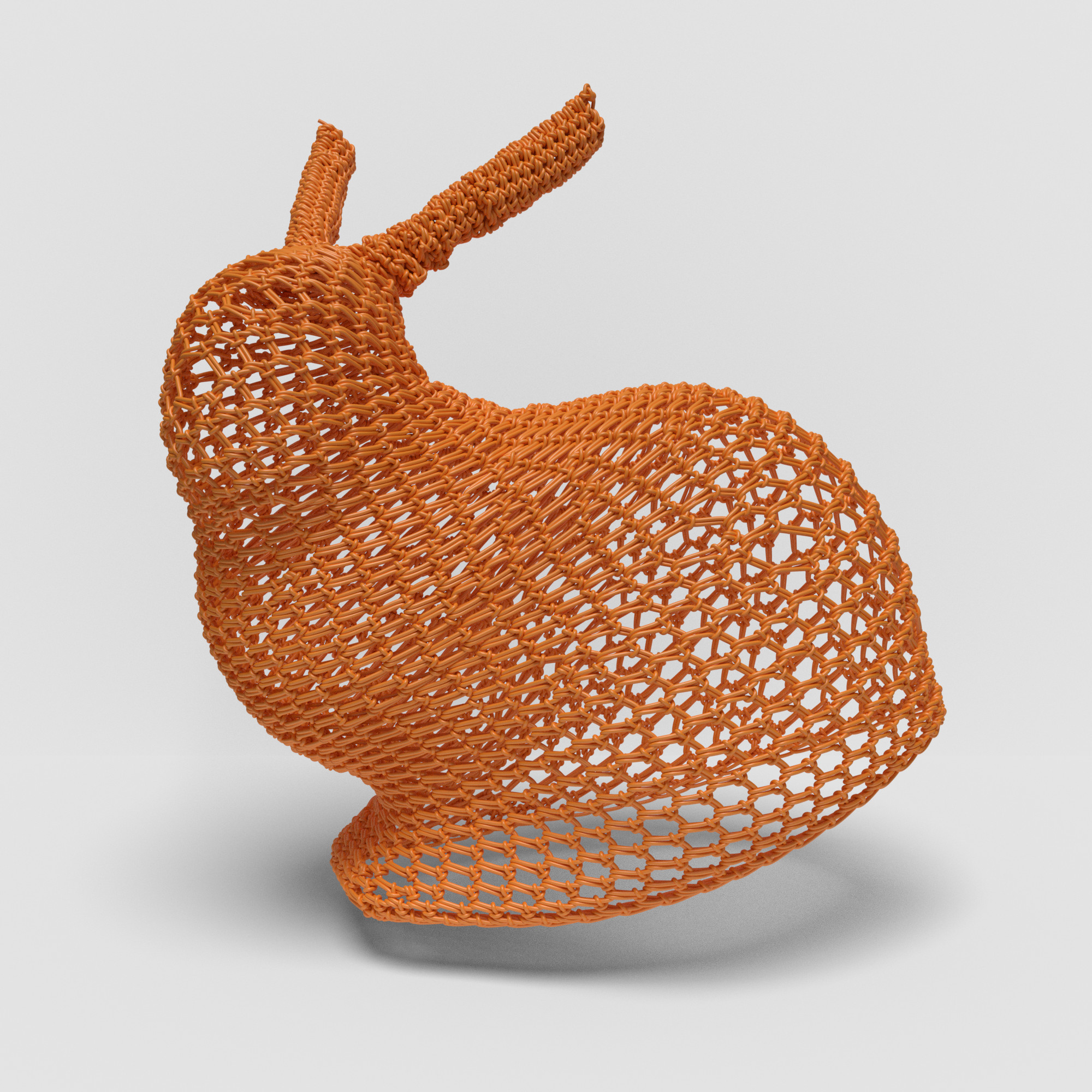
|
Representing Crochet with Stitch Meshes Crochet is a fabrication technique in which a 3D surface is created from yarn by interlacing loops formed with a special hook. Crochet patterns are typically represented using a standardized set of abstract pictorial symbols. Unfortunately, while this notation is enough for someone well-versed in the individual stitches, it does not directly show the yarn layout of stitches. This lack of specification makes it difficult for both novice users and computational design systems to parse, visualize, and design crochet patterns. We demonstrate how to represent crochet patterns within the stitch mesh paradigm. That is, the pattern is represented using a library of tiles, where each tile contains yarn geometry, and tiles connect along their edges. In order to adapt stitch meshes to crochet, we introduce a special edge type which captures the idea of the current loop -- the loop of yarn held on the crochet hook during fabrication. We also create a library of mesh face types which model commonly-used crochet stitches. We illustrate the richness of the crochet stitch faces by showing a number of examples including patterns generated from 3D models. |
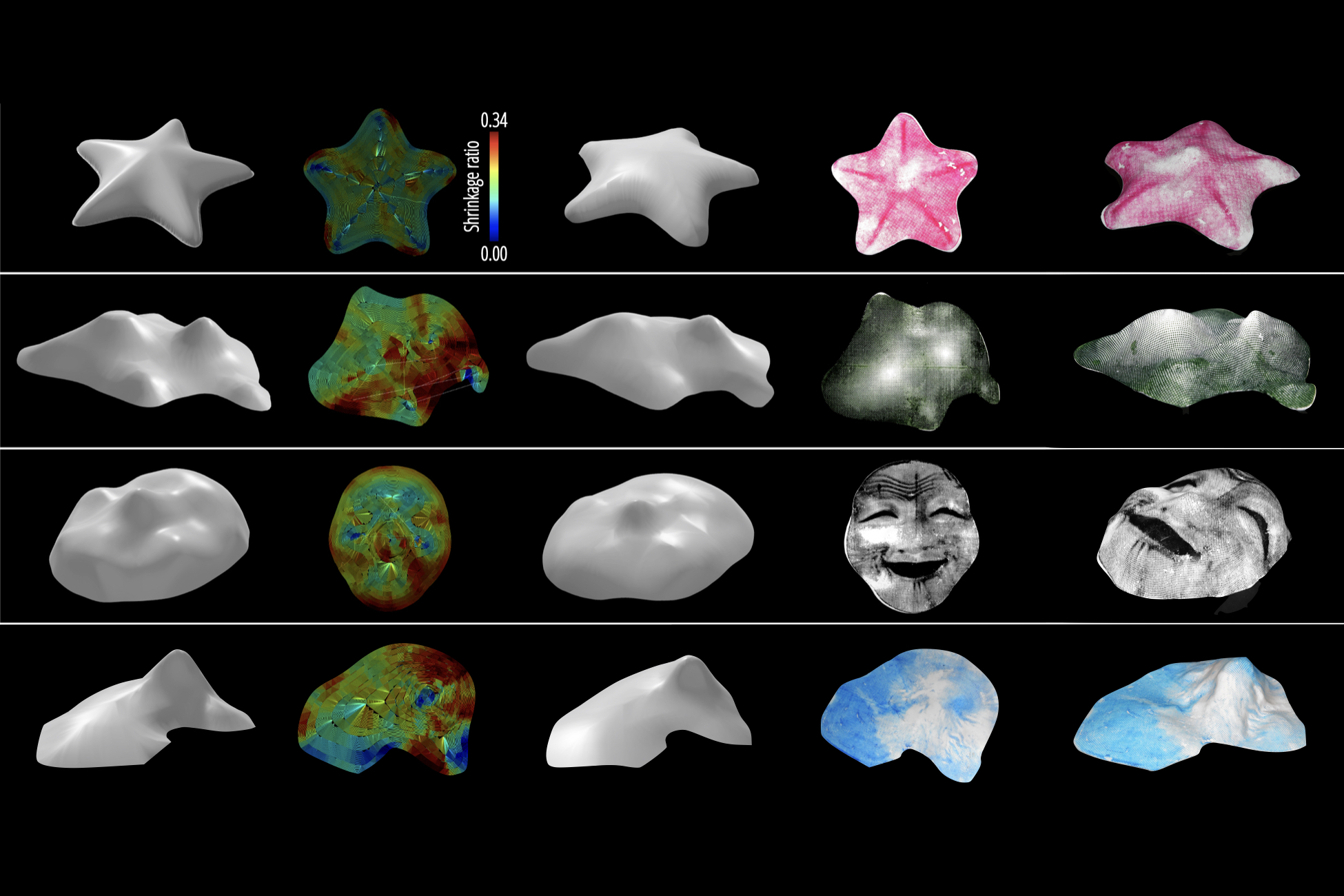
|
Geodesy+: Inverse Design Tool for Asymmetrical Self-Rising Surfaces 4D printing encodes self-actuating deformation during the printing process, such that objects can be fabricated flat and then trans- formed into target 3D shapes. While many flattening algorithms have been introduced for 4D printing, a general method customized for FDM (Fused-Deposition Modeling) printing method is lacking. In this work, we vary both the printing direction and local layer thickness; and extend the shape space to continuous-height-field surfaces without the requirement of symmetry. We introduce an end-to-end tool that enables an initially flat sheet to self-transform into the input height field. The tool first flattens the height field into a 2D layout with stress information using a geometry-based optimization algorithm, then computes printing tool paths with a path planning algorithm. Although FDM printing is the fabrication method in this work, our approach can be applied to most extrusion-based printing methods in theory. The results exemplify how the tool broadens the capabilities of 4D printing with an expanded shape space, a low-cost but precise coloring technique, and an intuitive design process. |
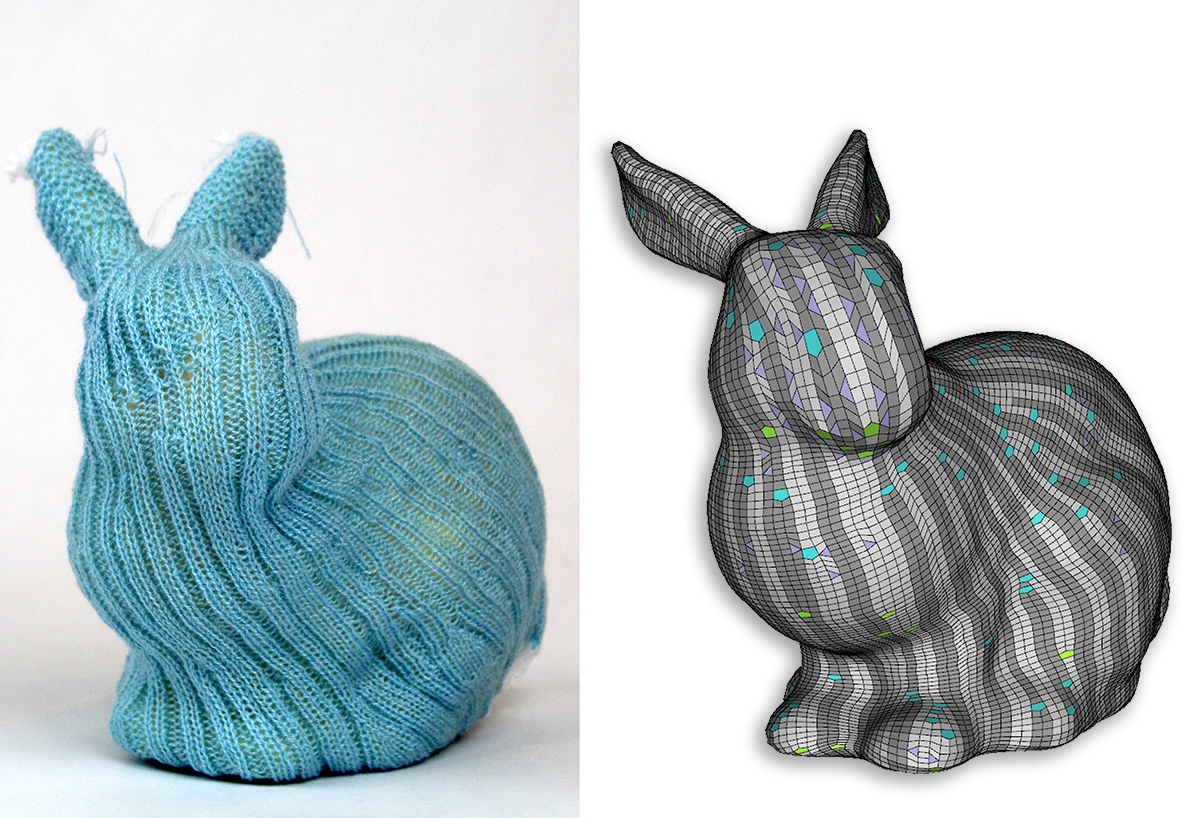
|
Visual Knitting Machine Programming In this paper, we present the first general visual programming interface for creating 3D objects with complex surface finishes on industrial knitting machines. At the core of our interface is a new, augmented stitch mesh datastructure that stores low-level knitting operations per-face and encodes the dependencies between faces using directed edge labels. Our system can generate knittable augmented stitch meshes from 3D models, allows users to edit these meshes in a way that preserves their knittability, and can schedule the execution order and location of each face for production on a knitting machine. We demonstrate the power and flexibility of our pipeline by using it to create and knit objects featuring a wide range of patterns and textures, including intarsia and Fair Isle colorwork; knit and purl textures; cable patterns; and laces. |
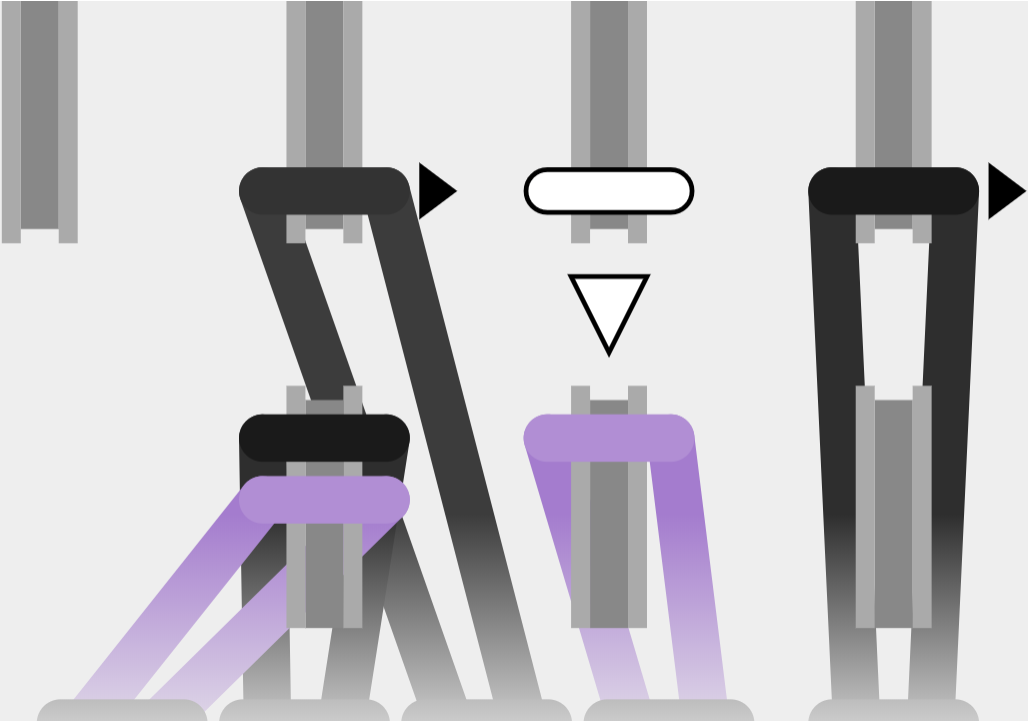
|
Efficient Transfer Planning for Flat Knitting Industrial knitting machines form fabric by manipulating loops of yarn held on hundreds of hook-shaped needles. Transfer planning algorithms generate a sequence of machine instructions that move loops between their current needles and given target needles. In this paper we describe how to compute the run-time cost of a transfer plan and compare the plans generated by several existing and new transfer planning algorithms. |
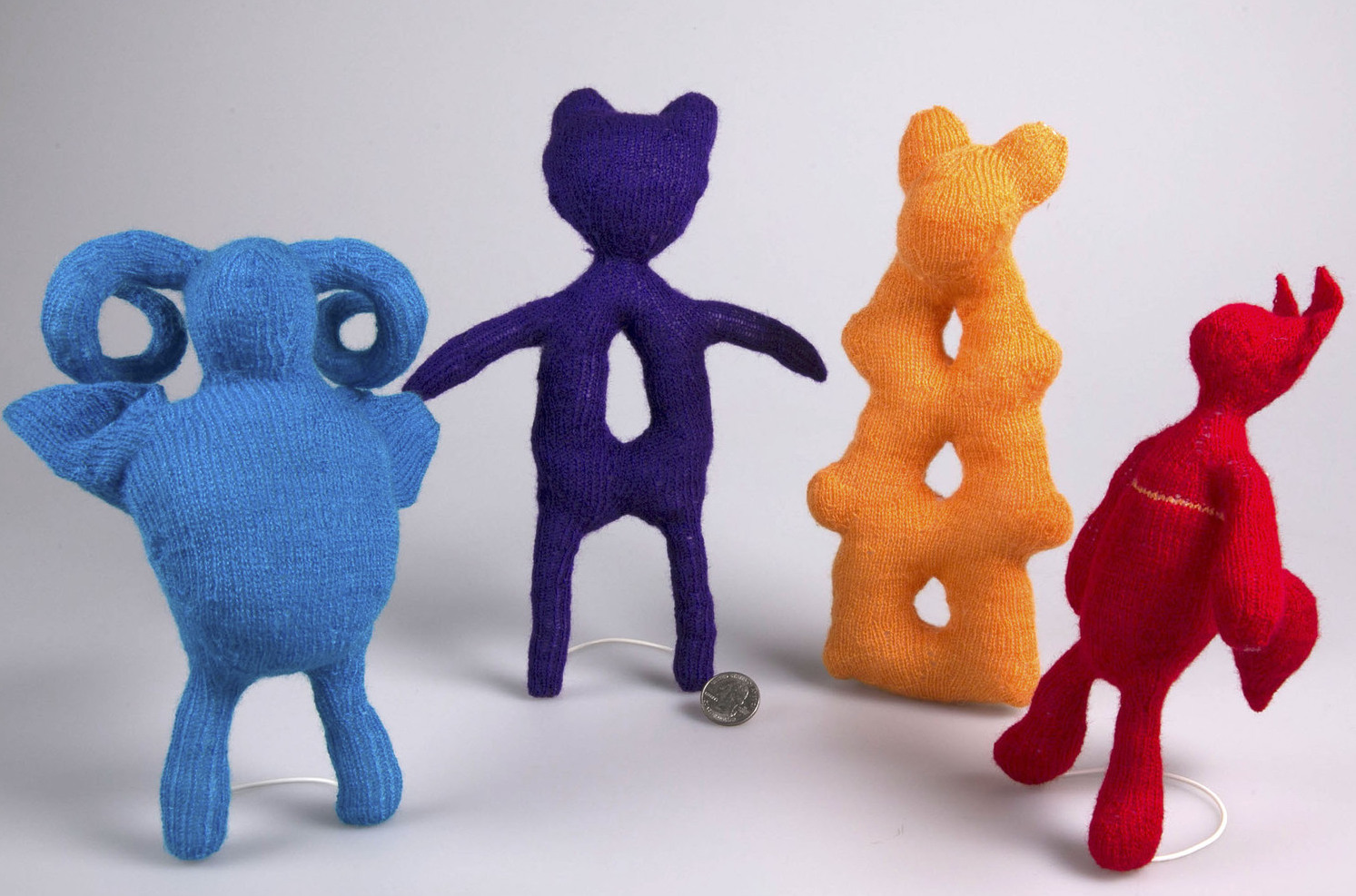
|
Automatic Machine Knitting of 3D Meshes We present the first computational approach that can transform 3D meshes, created by traditional modeling programs, directly into instructions for a computer-controlled knitting machine. |
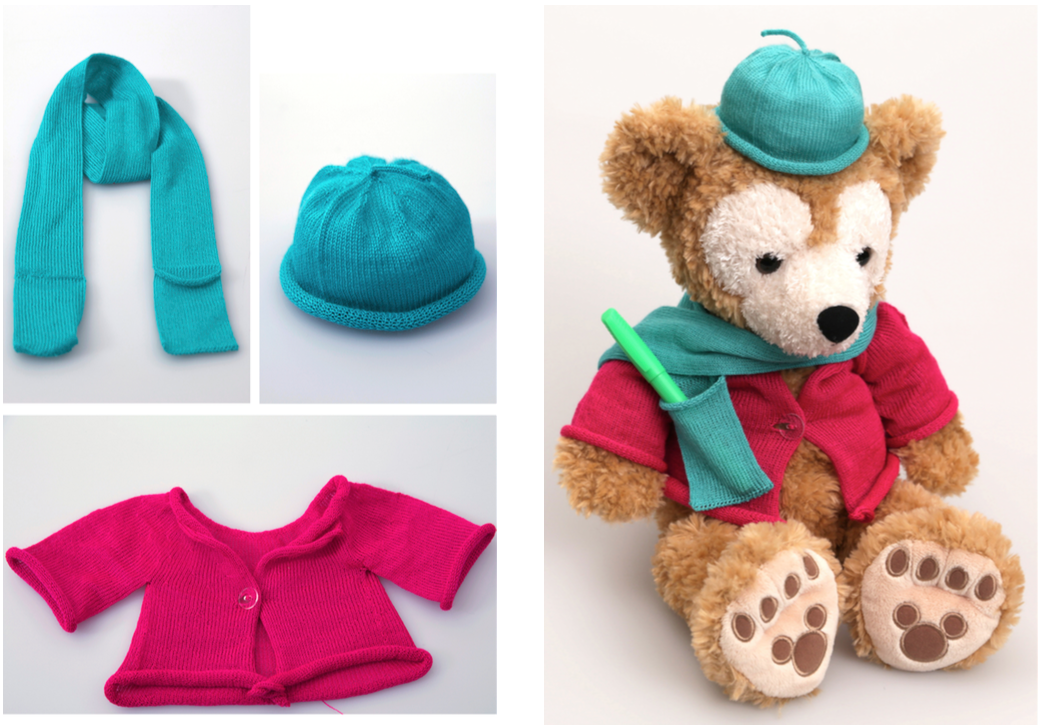
|
A compiler for 3D Machine Knitting Industrial knitting machines can produce finely detailed 3D surfaces but. programming them requires in depth knowledge of low-level knitting operations. In this work, we built a compiler to convert high level design primitives into knitting machine instructions. |
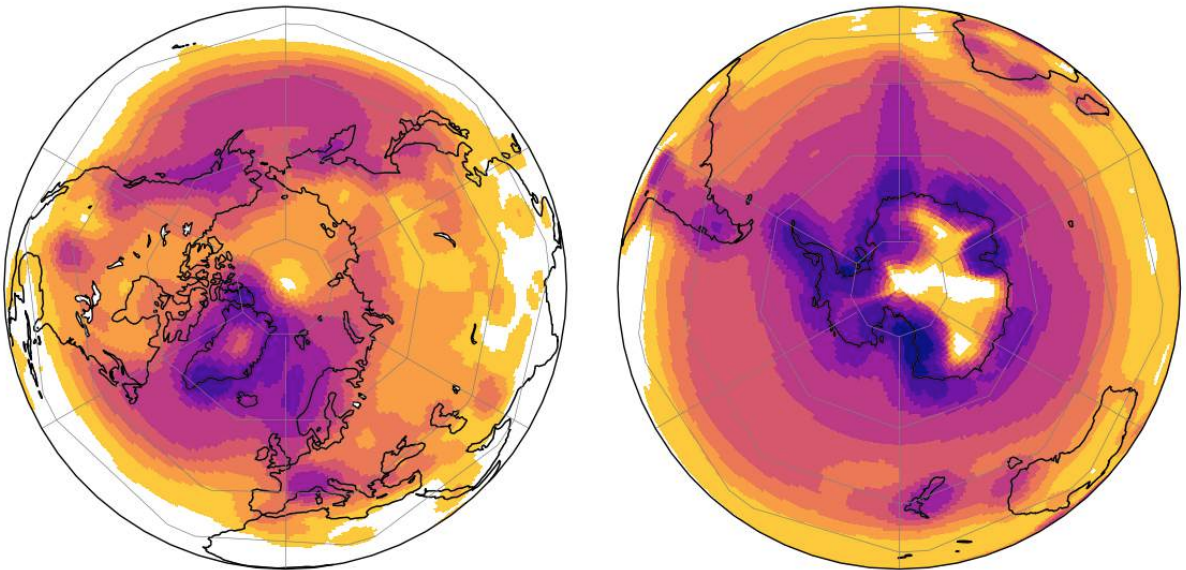
|
An exploratory framework for cyclone identification and tracking Analyzing depressions plays an important role in meteorology, especially in the study of cyclones. In particular, the study of the temporal evolution of cyclones requires a robust depression tracking framework. We propose a pipeline for the exploration of cyclones and their temporal evolution that combines the robustness of topological approaches and the detailed tracking information from optical flow analysis. |
|
Distance between extremum graphs Scientific phenomena are often studied through collections of related scalar fields. Exploration of such data requires a robust distance measure to compare scalar fields for tasks such as identifying key events and establishing correspondence between features in the data. We propose a topological data structure called the complete extremum graph and define a distance measure on it for comparing scalar fields in a feature-aware manner. |
|
|
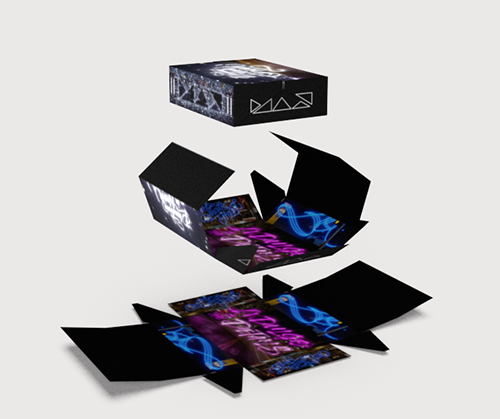
|
Fantastic Fold (Adobe MAX Sneak, 2018) (with Amanda Ghassaei, Danny Kaufman, Wilmot Li, Eric Stollman, Celso Gomes and Mike Lukac)During my internship at Adobe Research in 2018, I worked on Fantastic Fold -- a tool that analyzes a dieline and automatically determines the folded 3D shape, as well as an interactive mapping between the 2D and 3D representations for inuitive texturing (see the Adobe MAX Sneak video). |
|
|
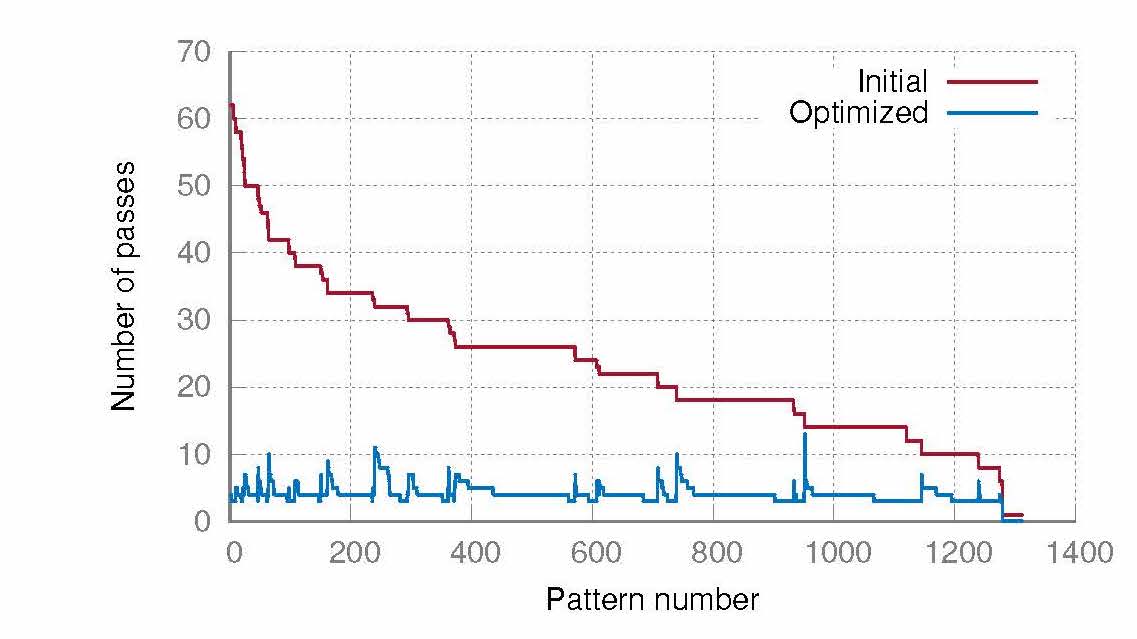
|
Instruction reordering for optimizing machine knitting (with Laxman Dhulipala, Spring 2018) For a compilers class, we optimized knitting machine programs written in knitout -- a machine knitting language -- to improve efficiency for flat transfer planning by reordering instructions (poster). Some of these ideas were used in the visual knitting machine programming system. |
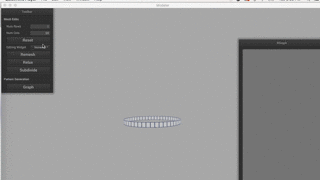
|
Modeling knittable geometry (Fall 2017) For a computational geometry class, I built an interactive modeler for machine knittable geometry which could be refined using a modified subdivision scheme (report). Some of these ideas went into building the visual knitting machine programming system. |
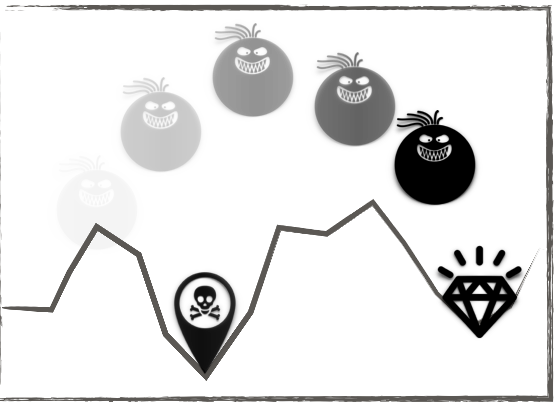
|
2D Games as Cyber Physical Systems (Spring 2017) For a cyber-physical systems class, I explored treating simple single player 2D game as a cyber physical system where playability and non-triviality can be gauranteed by a level design system (slides). |
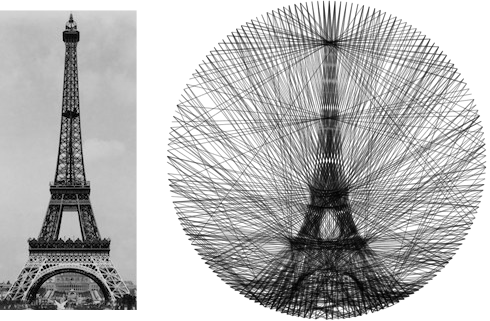
|
Computational String Art (Fall 2016) String or pin-thread art is a popular craft that involves winding a string around a set of nails to generate an artifact. An important task in automatic fabrication of such art work is planning the string layout to achieve the target representation. We explored this planning problem for generating string-art from images automatically. Motivated by artists (see Petros Vrellis , Kumi Yamashita ), we built an automatic framework to design such artifacts. Turns out that various people have been looking at similar ideas. Here is a poster I made for a class project on this topic. |
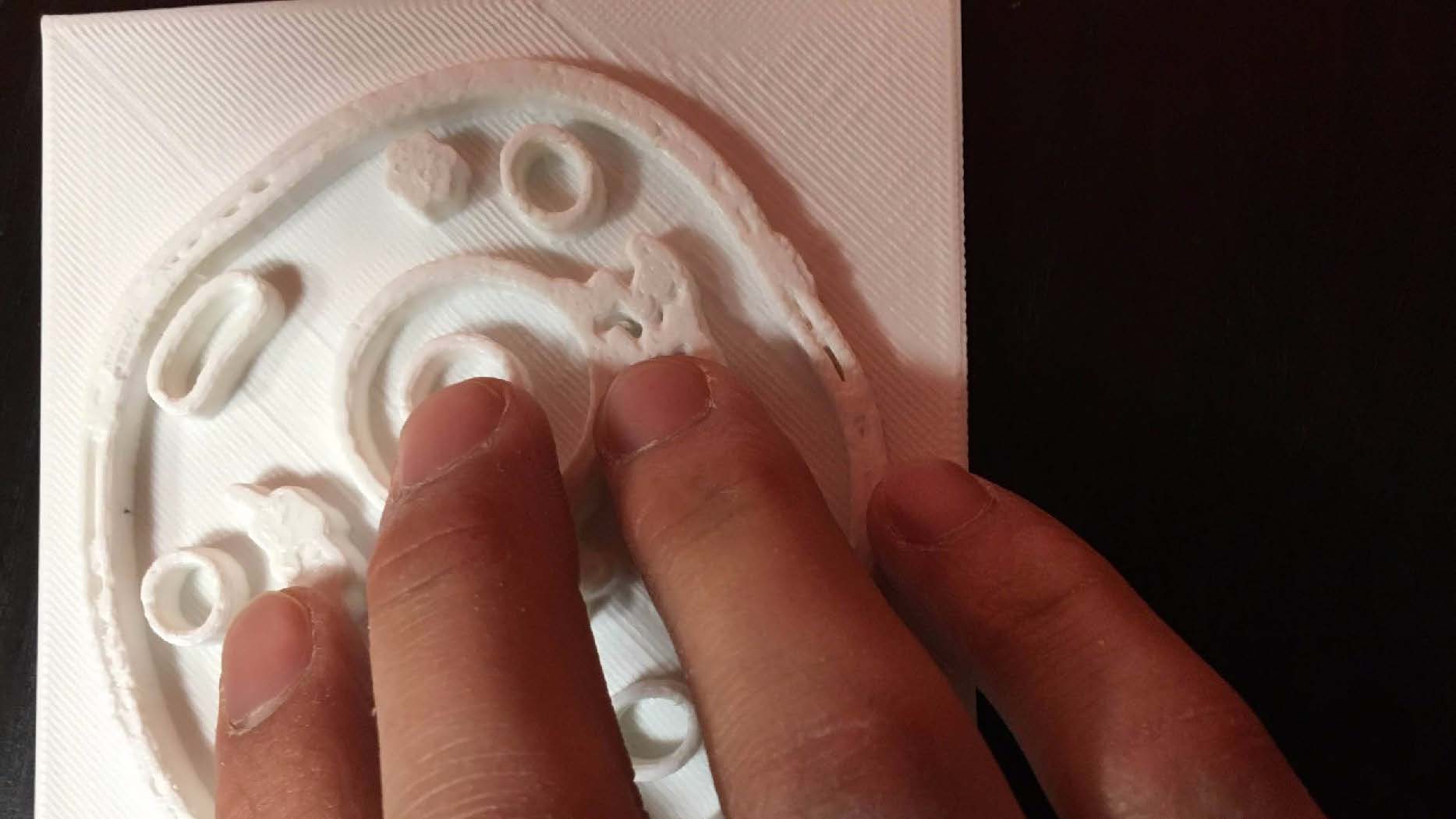
|
Tactile learning (with Hannah Rosen and Gary Li, Fall 2016) We compared various approaches to generate tactile versions of images to effectively communicate illustrations with individuals with visual impairment. Here are the slides from our presentation for the applied fabrication techniques class.
|
|
Website template stolen from here |